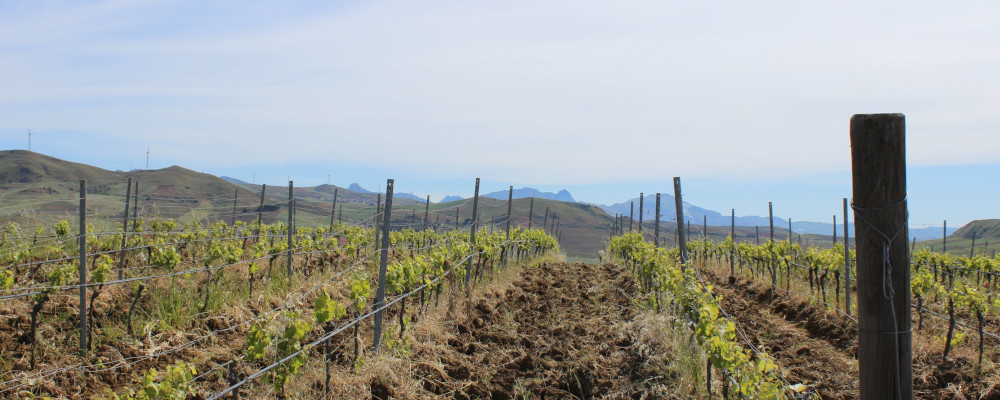This article is part two of my companion pieces on Italian white wines. Part one can be found here.
I am getting old, but I am not that old. So, it is merely my understanding, not my experience, that the white wines of Italy were once held in higher esteem than the reds, at least in the English speaking world. My guess is that the relative positioning of the two colours of wine flipped in the 1980s with the explosive popularity of Italian food and restaurants. A good old Gavi might do well with a penne alla vodka, but anything with a red sauce wants a Chianti.
In any event, fashion is cyclical and the Italian whites got their revenge in the last decade or so with the craze for Pinot Grigio. I am fairly certain that Pinot Grigio is the most despised wine grape among sommeliers since it has become a kind of shorthand for a not very interesting glass of white wine in the restaurants of North America. I’m a contrarian by nature, so I would counter that mass-produced Pinot Grigio ought to be praised as a gateway to some of Italy’s more interesting white wine grapes, like the ones below.
Cortese
In the first wave of popularity for Italian whites, few were more cited in wine lists than Cortese di Gavi, or simply Gavi as it is sometimes known. It comes from the southern end of Piedmont and is grown around Gavi itself and the surrounding hills. Its classic pairing is seafood from the relatively close Ligurian coast and found its original market in the restaurants of Genoa. Cortese’s compatibility with fish is said to come from a relatively low (for Italian whites) acidity, though I think of it as a particularly fresh wine, often with a lemon-lime character. DOCG Gavi is climbing in price, but I have found very good deals with wines made from Cortese from the Colli Tortonesi.
Pecorino
Pecorino is a grape, a cheese, and a sheep. The cheese is made from the sheep’s milk, and the grape is said to be its favourite snack. It’s mostly grown in the central east of Italy, in the Marche and Abruzzo. Like all good Italian whites, Pecorino tends to make fresh and bright wines but can get into tropical fruit flavours and some depth on the palate. I wrote about Pecorino after attending an Abruzzo trade tasting late year (one of the few live ones in Toronto in 2021), where I found a few made in this style, sometimes after being left on their skins for a few days. As Abruzzo’s winemakers continue to gain increasing attention in the wine world, I expect to find more interesting and complex expressions of this ancient grape.
Pinot Bianco
Why settle for Pinot Grigio, when you can go all the way with Pinot Bianco? Or rather, Weissburgunder, as the Germanic winemakers of Alto Adige call it. Alto Adige is also known as Sud Tyrol and was part of Austria until the end of the First World War. Grapes here, especially whites, are grown in the high altitude vineyards among the Dolomite Alps, but it’s the Southern end of the mountains, so the climate is a mix of Alpine and Mediterranean. That makes it particularly suited to Teutonic varieties like Pinot Bianco. It’s not a very big region, so the number of producers is small, including a few top-notch co-operatives. Accordingly, bargains from Alto Adige are becoming scarce, but the quality of the wines is all but assured. The Pinot Bianco’s from there seem to be particularly balanced between cool climate floral aromatics and minerality and warm climate fruit, often showing notes of apple or pear. (More on “mineralogy” below.)
Soave
I discovered the magnificent crenellated Castle of Soave by mistake, about a decade ago. I was on a press trip organized by a PR company that worked for both the wine producers of the Langhe and Prosecco. They had herded their journalist onto a motorcoach for an afternoon’s drive from Alba to Conegliano. Our one stop on the trip was at the Autogrill just east of Verona. There, across the highway from the combination of cafeteria and gas station, stood the castle and surrounding vineyards on their rolling volcanic hills.
Soave, like Gavi, enjoyed popularity in the first wave of Italian white wine ascendancy, before falling out of favour. It’s come back as a connoisseur’s favourite, and not just for its amusing name. Soave, made in the modern, clean style, exhibits the elusive, controversial and ultimately sought after character of “minerality”. Entire seminars have been devoted to trying to figure out exactly what minerality is. To my mind and palate, it’s a character of acidity that comes close to, or is experienced as saltiness. Conventional wisdom in the wine world is that there is a strong correlation between vines grown on volcanic soils and mineral wines.
Vermentino
Vermentino is cultivated in Liguria and Tuscany, but its main base is the island of Sardinia, where it somehow defies the hot Mediterranean sun to make a crisp fresh wine, often with a hint of floral aromatics, and almost always some lemony fruit notes. It also often displays a character I associate more closely with red Italian wines: a slight bitterness on the finish. In the case of Vermentino, that bitterness comes as a note of almond and has a refreshing effect, a bit like a gin and tonic.
Any and all of these wines make for a great aperitivo, to wake up the senses before dinner, or a companion to a long lunch. All are suited to surviving a long Canadian winter in anticipation of warmer days ahead.
Recommended for You

Malcolm Jolley: Cool Chardonnays for warm days

Malcolm Jolley: The LCBO strike was a spectacular misstep

Malcolm Jolley: Doug Ford is right. The LCBO has long outlived its purpose

Malcolm Jolley: What is rosé anyway?









